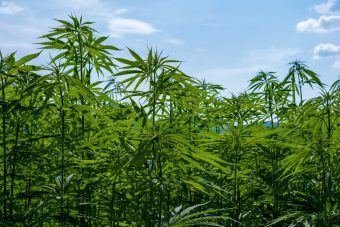
Suitable climatic conditions and quality land help our country’s potential for the cultivation of industrial hemp. These are not just assumptions but proven facts. The former Yugoslavia was its biggest exporter of hemp in Europe in the mid-20th century. We spoke with Hadži Zoran Jovanović, a hemp expert, about this plant’s importance and benefits for the environment and energy.
Fifteen years ago, together with his colleague Dr Maja Timotijević, Zoran instigated the return of industrial hemp to Serbian fields and its processing. The two of them received support from the Development Agency of Serbia and the Innovation Fund through the Smart Start grant. What followed was the formation of a startup called ReHemp d.o.o. Novi Sad, whose name is translated into Serbian, means — hemp again.
Speaking about hemp’s advantages, in the period from April to August, which is the period between planting to harvesting hemp and the care which does not require the use of chemicals during the noted period, up to 10 tons of stalk-biomass can be generated, which is a result unique only to hemp and no other plant species. Growing this plant reduces the need for deforestation because it has a significantly higher amount of cellulose than trees. At the same time, it also improves the health of the soil, which it can clean even from radiation. Considering waste pollution, hemp can replace plastic in all aspects and in terms of air pollution; during its growth, hemp absorbs up to seven times more CO2 than other plants.
IN FOCUS:
- MLEKOMAP: FRESH MILK AT YOUR FINGERTIPS
- EMPOWERING LOCAL COMMUNITIES – PANEL BY PANEL TO POWER PLANT
- CIRCULAR ECONOMY AND BANKING

There is a benefit for factories, too, with the help of environmental vouchers. Namely, every factory that emits CO2 during its production process pays taxes. However, if the factory proves that it financed the planting of industrial hemp in certain areas by calculating the quantity of carbon dioxide the planted hemp absorbs and if this amount is equivalent to the quantity of carbon dioxide the factory emits, the company is exempt from paying taxes. Hemp’s benefits are multiple; as Hadži Zoran Jovanović says, this is a miraculous plant that nourishes, clothes, heals and warms. Looking at problems in the energy sector, such as carbon dioxide emissions, unsafe sources of oil and gas and imported energy harmful to the environment, Mr Jovanović, an energy expert, started researching to make the most of this plant’s potential. As he explains, about 30 products can be made by processing hemp flower and seed, while 70,000 products can be produced by processing the stem. However, since no one has seriously dealt with hemp, the stems only represented a problem for industrial hemp breeders.
That is why Mr Jovanović started researching how to transform this part of the plant from a problem to a benefit, and he found that pellets can be produced from the stem. The Republic of Serbia’s Intellectual Property Office protects hemp pellets as a small patent. The importance of the pellet obtained in this way lies in its price cost as much as beech pellets but have 20 per cent higher caloric value. The production process is almost identical to that of other types of pellets. The only difference is that the hemp stem must undergo decortication, that is, the separation of the fiber from the pods. Burning the pellets obtained in this way produces less than two per cent of ash remains, which makes hemp pellets a fuel with the highest degree of utilization — 98 per cent.
Prepared by: Katarina Vuinac
Read the story in the new issue of the Energy portal Magazine CIRCULAR ECONOMY



